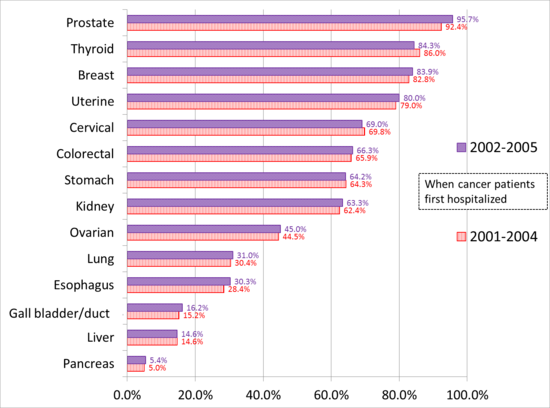Column Finance and the Social Security System 2019.05.17
【Aging, safety net and fiscal crisis in Japan】No.186:10-year relative survival rates for cancer patients
In April 2019, the National Cancer Center Japan released a survey report of 10-year relative survival rates for cancer patients. The definition of relative survival rate as described on the website of the National Cancer Institute in the United States is as follows.
[ A way of comparing the survival of people who have a specific disease with those who don't, over a certain period of time. This is usually five years from the date of diagnosis or the start of treatment for those with the disease. It is calculated by dividing the percentage of patients with the disease who are still alive at the end of the period of time by the percentage of people in the general population of the same sex and age who are alive at the end of the same time period. The relative survival rate shows whether the disease shortens life.]
In order to measure relative survival rates, the National Cancer Center Japan started with the first hospital admission of a cancer patient. Figure 1 shows the 10-year relative survival rates of cancer patients who were hospitalized for the first time in the period 2001-2004 and the period 2002-2005, by classification of cancer type. It can be seen that there is a large difference in survival rate depending on the type of cancer. Furthermore, there is no statistically significant improvement in 10-year relative survival rates between patients in the period 2001-2004 and patients in the period 2002-2005.
Figure 1

Source: Japanese Association of Clinical Cancer Centers
